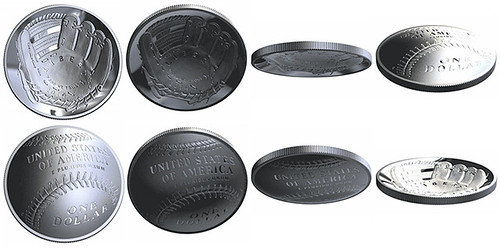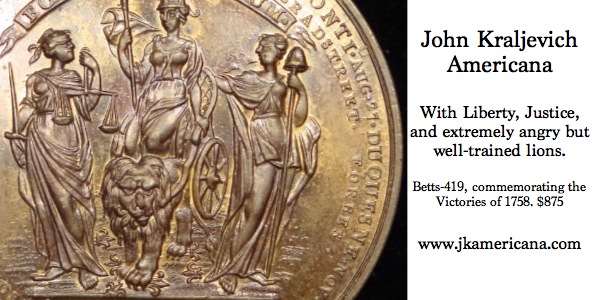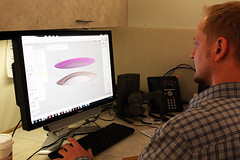
PREV ARTICLE
NEXT ARTICLE
FULL ISSUE
PREV FULL ISSUE
HOW THE U.S. MINT MADE THE BASEBALL COIN
WIRED magazine published a great story on how the U.S. Mint designed and manufactured the curved baseball commemorative coin. Here's an excerpt - be sure to read the whole thing online.
-Editor

Later this month, the U.S. Mint will release a coin unlike any it’s ever made. Instead of being flat, it is shaped something like a bowl, with a convex surface that calls to mind a ball. A baseball, to be precise. The design, commemorating the 75th anniversary of the National Baseball Hall of Fame, bears the image of a baseball on one side. The obverse side, as it’s officially known, shows a baseball glove, gently curving inward. It’s a clever marriage of form and content, with the convex and concave sides lending the ball and the mitt a measure of three-dimensional realism. It’s also about as radical as coinage gets, and required an unprecedented effort by our nation’s money makers. “This was like a moonshot for us,” says Stephen C. Antonucci, manager of digital development for the U.S. Mint in Philadelphia. “It stretched the bounds of everything we knew about coin development.”

The curved coin is not, however, the first of its kind anywhere. The bill that birthed the coin–The National Baseball Hall of Fame Commemorative Coin Act, signed into law by the 112th Congress on August 3, 2012–specifically references a curved coin issued by the French Mint, the Monnaie de Paris, to celebrate the International Year of Astronomy in 2009. When Antonucci’s team stepped up to the plate, the first thing he did was get his hands on one of those French coins.
Typically, once a design is locked in, the mint sends off for master dies that are used to strike the coin in large quantities. It’s a tried-and-true system, but in this case, Antonucci couldn’t take anything for granted. Although master dies have stamped millions of coins over the years, every one of those coins was flat. Could a domed die handle the rigors of pressing and tooling? Could flat blanks be wrapped around a domed die in the first place, or would the ball and glove imagery need to be stamped onto pre-curved blanks? There was no way to tell until they tried. The test runs went surprisingly well. Initially, the plan was to make only the gold and silver coins domed. But at some point, an order came down to make the clad, half-dollar coins (those that, like nickels, dimes, and quarters, have a copper core plated with nickel alloy) were to be curved as well. This was another challenge–Antonucci called the clad coin his “nemesis”–as introducing additional metals increased the risk of warping and die defects. But his team eventually got the kinks ironed out, tweaking the shape of the dome and the severity of the relief to make it all work. This coin is the first clad domed coin produced anywhere in the world. The Congressional bill gave the mint permission to issue up to 50,000 $5 gold coins, 400,000 $1 silver coins, and 750,000 half-dollar clad coins. Prices will include an additional charge of $35 for each gold coin, $10 for each silver coin, and $5 for each half-dollar, with proceeds going to the National Baseball Hall of Fame. The coin will be released March 27. The unique design will likely make the coin a hit with collectors. But for Antonucci, in a world defined by exacting specifications, where every detail is legislated, the dome was a rare chance to push his craft into new territory. The resulting tender, he says, is unlike anything you’ve held before. “This is gonna change things when you say, ‘let’s flip a coin.’” To read the complete article, see: How the U.S. Mint Made Its First-Ever Domed Coin (www.wired.com/design/2014/03/u-s-mint-first-ever-domed-coin/)

Wayne Homren, Editor The Numismatic Bibliomania Society is a non-profit organization promoting numismatic literature. See our web site at coinbooks.org. To submit items for publication in The E-Sylum, write to the Editor at this address: whomren@gmail.com To subscribe go to: https://my.binhost.com/lists/listinfo/esylum All Rights Reserved. NBS Home Page Contact the NBS webmaster 
|
